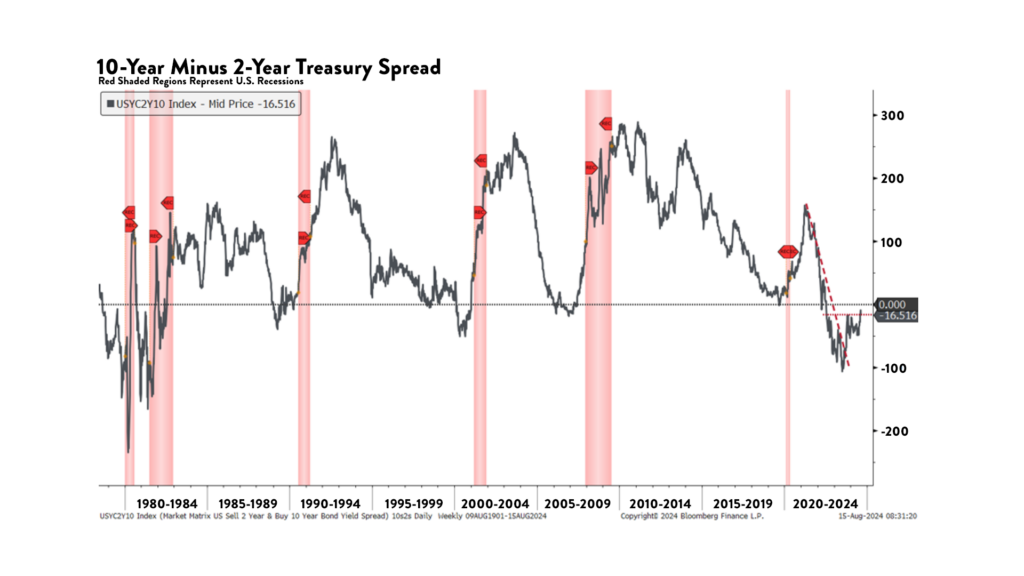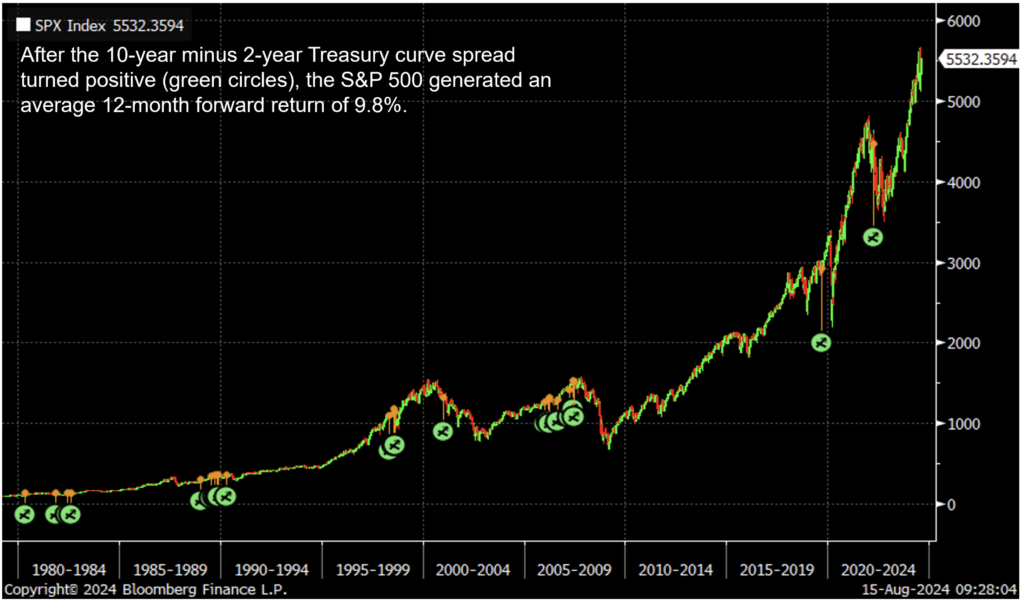What Is a Yield Curve? Understanding Treasury Yields
What is a yield curve? The simple answer is, it’s a comparison of two types of fixed incomes of different maturities, and the difference between the current yields, as measured on a curve. One of the most commonly watched is between the 2-year U.S. Treasury yield, and the 10-year Treasury yield. In a normal interest rate environment, you would expect a higher yield on the 10-year than the 2-year. So, if you started with the yield on the 2-year, and drew a line out to the 10-year, it would curve upward. An investor would expect to be rewarded for holding a longer-term bond, right?
That would be a normal yield curve. But, when shorter-term rates are higher than longer-term rates, we get an inverted yield curve. That’s been the case in our current economic environment since July, 2022. We’ve actually gone 533 trading days with an inverted yield curve. That’s the most ever.
Yield Curve Inversion: A Historical Recession Indicator
Historically, when the yield curve inverts, it’s a good sign that a recession is soon to follow. But, it’s often times when the yield curve returns to normal first.
Take a look at this chart from LPL Financial.

You see the yield spread going back to 1979. The dotted black line is even. The red shaded areas are recessions. There are six recessions. Look at when that black line drops below even and is negative. The two most distant recessions started while the yield curve was inverted. The next four, didn’t start until the yield curve returned to normal.
You can see at the far right of the chart that the yield curve is closer to returning to normal. Does that mean a recession is about to happen? And if it does, what about the stock market?
S&P 500 Performance After Yield Curve Normalization
Here’s another chart from LPL Financial.

This one shows the S&P 500 Index performance with those green circles representing points in time when the yield curve dis-inverted, or returned to normal, after being inverted. Historically, after that happened, the S&P 500 Index has been up, on average, 9.8% in the 12 months following.
That means, that recession or not, the stock market doesn’t necessarily drop after the yield curve returns to normal.
Federal Reserve and Interest Rate Cuts: Impact on Yield Curve
The Federal Reserve will meet next month and very likely may begin cutting interest rates, which would logically drive short-term yields down and begin to normalize the yield curve.
Yield Curve, Recession, and Market Performance
Bottom line: LPL Research points out that while a yield curve returning to normal has often signaled a recession, we need additional context. In the previous recessions, the Fed cut rates to spur economic growth. This time a possible cut would likely be in response to confidence that inflation is receding. In addition, the dis-inversion of the yield curve does not necessarily mean the market will take a dive, as historical data shows the S&P 500 Index tends to trade higher after a curve spread crosses back above zero.
The opinions voiced in this video and blog are for general information only and are not intended to provide specific advice or recommendations for any individual.
Securities offered through LPL Financial, Member FINRA/SIPC. Investment advice offered through Independent Advisor Alliance. Independent Advisor Alliance and GenWealth Financial Advisors are separate entities from LPL Financial.





